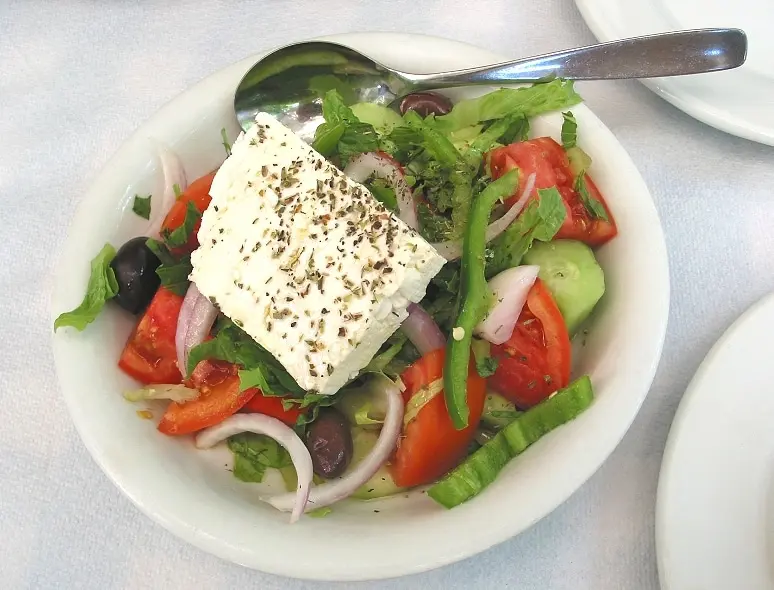
According to the Academy of Athens, scientists have recently decoded the DNA of the famous Greek Feta cheese.
Scientists from the Biomedical Research Foundation of the Academy of Athens studied a wide variety of feta cheese produced all across the nation of Greece in an effort to quantify the nutritional specifics of the popular Greek cheese.
According to the findings, feta cheese has 489 different types of protein, making it one of the most protein-rich cheese varieties in the entire world.
Feta cheese is a white cheese produced in Greece and made of sheep’s milk, but it can also be made from a mixture of sheep and goat’s milk.
Feta cheese is an iconic Greek product
According to the European Union’s law regarding products’ “protected designation of origin,” feta must be produced by using exclusively whole sheep’s milk or a blend of sheep’s and goat’s milk. The goat’s milk can never be more than thirty percent of the total.
Greece won a long legal battle with Denmark in 2002 over the brand name “Feta.” Since then, every package of cheese sold inside the European Union that bears the name ”feta” must meet specific standards and be produced exclusively in Greece.
Cheese-making is an ancient practice in the Mediterranean with the production of cheese from goat’s or sheep’s milk dating back to the 8th century BC in Greece.
This history is accompanied by ancient myths about cheese production, including one in which Apollo’s son Aristaios, raised by nymphs, teaches mankind the art of preparing milk for cheese production.
A cheese resembling feta is mentioned in Homer‘s Odyssey. In the ancient work, the Cyclops Polyphemus is described as a shepherd who lives with a cave full of cheese and milk taken from his flock. Feta, in the form known nowadays, was first mentioned during the Byzantine era.
Feta is a crumbly, soft, white cheese with a tangy flavor. It is created by placing the curdled milk mixture into wooden barrels. The curdled mixture is very compact and must be sliced in order to fit into the barrels. The name feta, Greek for ‘slice,’ most likely derives from this practice.
After sitting in the barrels for several days, the cheese curds are placed in brine, a salty water solution, which is essential in creating the cheese’s iconic flavor. This is why your feta is floating in liquid when you buy it in the supermarket!
Feta is used in many Greek dishes but most notably in what is known as Greek salad, or horiatiki, as well as in baked goods, such as spanakopita and tyropita. Because of its popularity, feta is now used throughout the world in many dishes.
See all the latest news from Greece and the world at Greekreporter.com. Contact our newsroom to report an update or send your story, photos and videos. Follow GR on Google News and subscribe here to our daily email!



